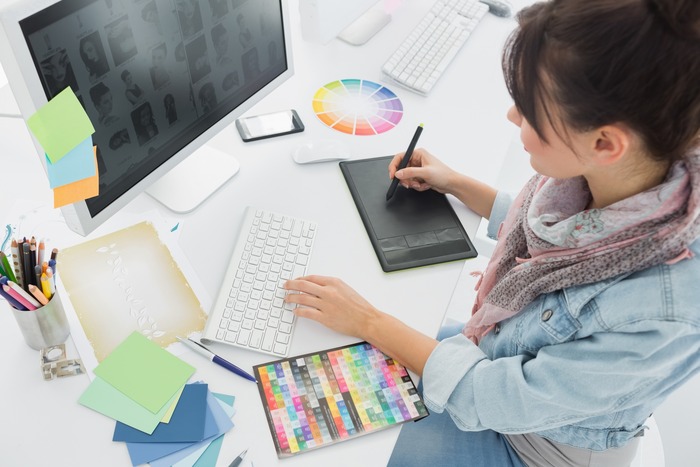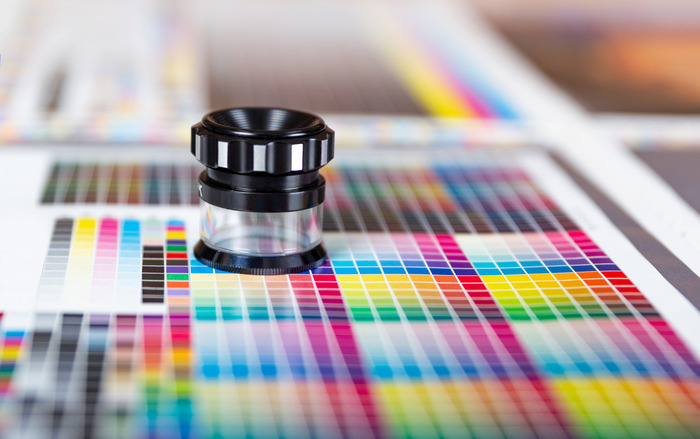When you hear the word “design,” what do you think of?
Do you think of sleek websites, colorful logos, or trendy fonts? Or do you maybe think of ancient manuscripts, medieval tapestries, and Renaissance paintings?
See, design is not a modern phenomenon, and different people may associate it with different things, depending on whom you’re talking to.
So, today we’ll focus on the examination of two distinct yet interconnected facets: print and digital design.
What makes them different, what makes them unique, and what ties them together—that’s what this article is all about.
Curious? Then stay with us.
-
The User Experience
One of the most apparent distinctions between print and digital design lies in the way users interact with the final product.
A print design offers a tangible and tactile experience that engages multiple senses.
The feel of high-quality paper, the smell of freshly printed ink—these sensory elements contribute to a unique and memorable encounter.
On the flip side, digital design relies on the intangible—the smooth glide of a touchscreen, the instant feedback of a click.
It’s a visual and interactive experience that engages primarily with sight and sound, and it targets a tech-savvy audience that expects dynamic products.
Still, as different as these two mediums are in terms of the user experience they offer, they can very well help one another.
For example, this Xerox case study perfectly demonstrates how digital design can help print companies adapt to the changing market and consumer preferences, as well as increase their sales and conversion rates along the way.
-
The Design Process
The design process for each of these two mediums has some unique characteristics reflecting the different nature and requirements of the final output.
For starters, the planning stage, where designers define the goals, scope, and constraints of the project, is different.
For print, this stage involves more research and analysis of the target audience, the message, and the context of use. This is because print has more permanence and less flexibility than digital designs.
For digital designs, it’s more about prototyping and testing the functionality, usability, and interactivity of the products.
The other difference lies in the layout stage, with print requiring more attention to the shape, size, and orientation of the product, and digital designs requiring more attention to things like responsiveness and accessibility of the product.
There are also differences regarding the:
- Typography (Legibility and readability are the main concerns with print, while scalability and animation of the text are bigger considerations when it comes to digital designs.)
- Colors (Print requires more knowledge about color models and systems used for printing, while digital designs require more knowledge of color psychology and culture.)
- Resolution (Print requires higher resolutions, so it involves more calculations of the dots and pixels per inch of the product. Digital designs are more about optimizing the file sizes and formats of the product.)
- Output (With print, there is more collaboration with the printer, client, and the end-user, as it needs to be distributed physically. With digital designs and the fact that they are uploaded online, collaboration comes down to the developer, server, and the browser.)
There you go!
-
The Constraints
Since we’ve already briefly tackled the constraints of these two mediums, let’s dig into them a bit deeper.
When we’re talking about print design, we can say that it operates within the confines of physical space and materials.
Designers must consider factors like size, resolution, and color accuracy to ensure the clarity and quality of the final product, which can be both a challenge and a source of inspiration.
On the other hand, digital design knows no boundaries.
With the vast canvas of the internet and an array of tools at their disposal, digital designers can create immersive, dynamic experiences, incorporating animations, videos, and interactive elements that transcend the limitations of print.
With that said, digital design also has to follow certain rules and satisfy certain standards to ensure a seamless user experience.
For example, digital designs need to be adaptable to different screen sizes and resolutions to guarantee a consistent and user-friendly display across a variety of devices.
-
The Challenges
When we’re talking about the challenges of these two mediums, we’re primarily talking about the costs and their accessibility.
Print materials, for one, often involve higher production costs, from printing to distribution.
On the other hand, digital design, being inherently virtual, eliminates many of these costs.
As a result, this makes digital content more accessible to a global audience with just a click.
Still, print and digital design can complement each other here, as digital platforms can be used to extend the reach of print campaigns, creating a cohesive and cost-effective strategy.
-
The Trends
Each print and digital design follows certain trends that are inherent to them.
For example, the usage of sustainable packaging, typography as art, as well as metallic effects (think foil stamping, metallic inks, or holo materials) is more inherent to print designs.
Contrary to that, digital designs follow trends related to animation and motions, personalization and customization, as well as accessibility and inclusivity.
However, it’s important to note that there are some trends that both of these mediums follow.
For instance, lately, there’s been a resurgence of old print styles, such as vintage or retro designs, that appeal to nostalgia and the sense of familiarity in customers. These styles can also be applied to logos and web designs using faded colors, textured backgrounds, illustrations, and handwritten fonts.
There’s also the rising trend of using bold minimalism.
In response to the visual clutter and information overload that consumers face every day, these simple, clean, and striking designs can be used in both print (e.g., business cards) and digital designs.
So, while each of these two mediums maintains its distinct trends, it seems like the future holds the promise of fusion between print and digital mediums.


